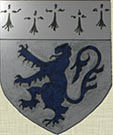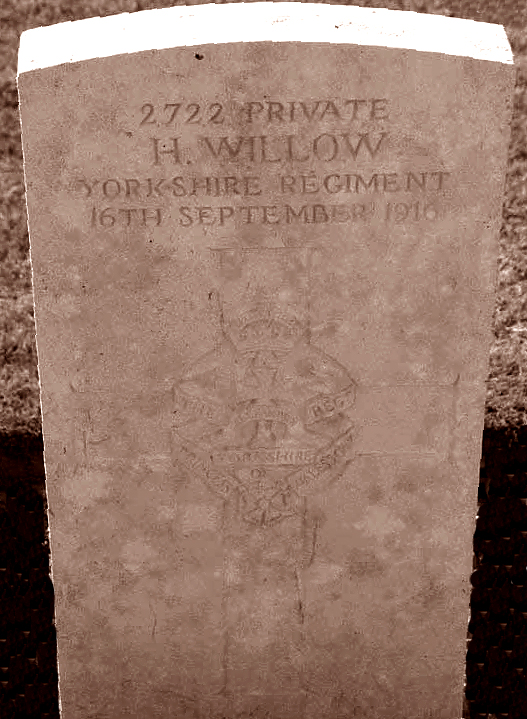 |
SKELTON - IN - CLEVELAND
IN HISTORY
|
 |
"WE WILL REMEMBER THEM"
2722 Private HORACE WILLOW.
4th Battalion, Yorkshire Regiment.
Killed in action, aged 29, on the 16 September 1916.
Born Skelton. Enlisted at Northallerton, N Yorks.
Son of Alfred and Annie Willow of 24 Yeoman St, Skelton in Cleveland, N Yorkshire.
|

|

Caterpillar Valley Cemetery, Longueval.
10k East of Albert. 10k South of Bapaume.
|
FAMILY:-
1901. Horace, aged 14, was living at 24 Yeoman St and working as a Jeweller's errand boy. He had been born in Skelton.
His father, Alfred, aged 49, was an Ironstone Miner, below ground. He had been born in Shoreditch London.
His mother, Annie, was born in Maidstone, Kent. She had 7 children and all were living in 1911.
He had an elder brother, Alfred 20, a grocer and a elder sister, Gertrude 16, a "day servant"
Two younger sisters were Florence 10 and May 8.
1911. The family are still at 24 Yeoman St. Horace has left home and address not yet traced.
Gladys, age 7, is a new addition to the family and a Grandson Tommy Parry lives with them.

|
WAR SITUATION:-
Horace's Medal Card shows that he was serving with the 4th Yorks from when they first went to France on 18th April 1915.
Unless he was out wounded at some time, he must have fought with the Battalion through all their trials at Ypres in the Winter of 1915/16 and then at the trenches in the Kemmel sector earlier in 1916.
The 4th Battalion, Yorkshire Regiment were part of the 150th Brigade, 50th (Northumbrian) Division.
At the time of Horace's death the Battalion were attacking German trenches to the North East of Martinpuich in the Battle of Flers-Courcelettes, which was part of the continuing Battle of the Somme.
Many Battalion men were killed and wounded.
Full details based on the Battalion War Diary can be read starting here.
MEMORIAL:-
Caterpillar Valley, where Horace is buried, was the name given by the Army to the long valley which rises eastwards, past "Caterpillar Wood", to the high ground at Guillemont.
The ground was captured, after very fierce fighting, in the latter part of July 1916.
After the Armistice, this cemetery was hugely increased when the graves of more than 5,500 men were brought in from other small cemeteries, and the battlefields of the Somme.
The great majority of these soldiers died in the autumn of 1916 and almost all the rest in August or September 1918.
|
|